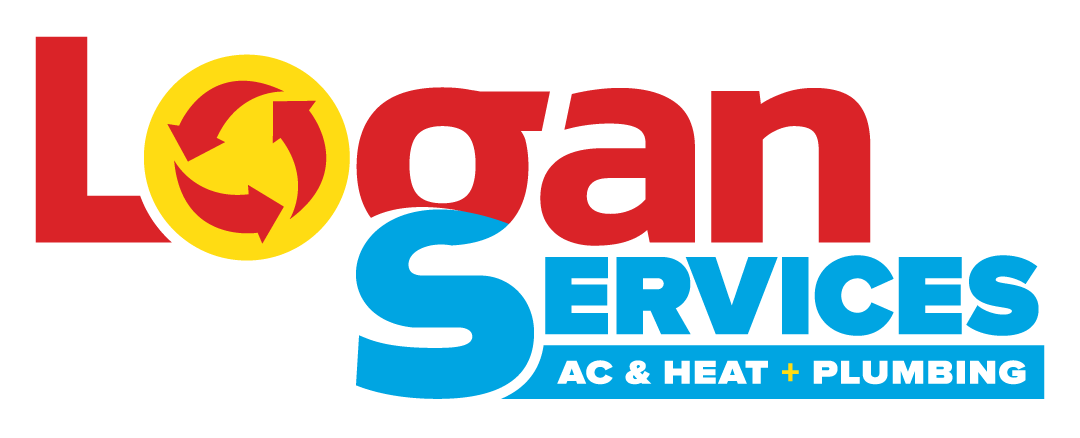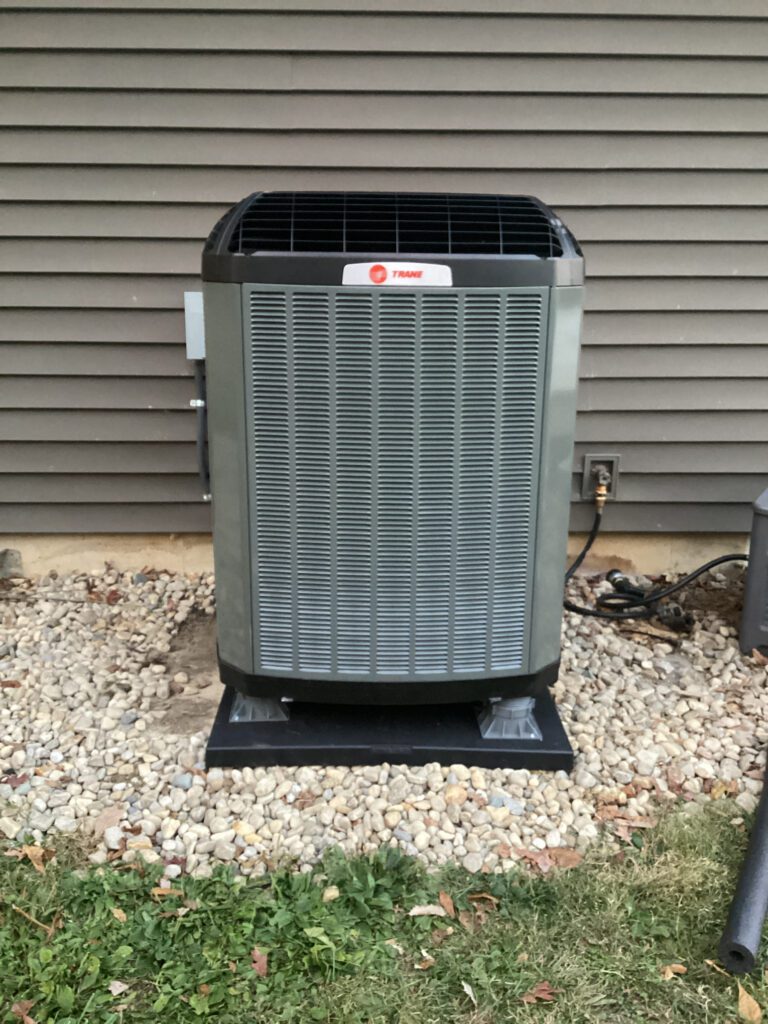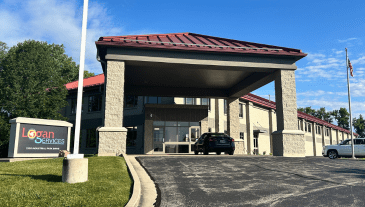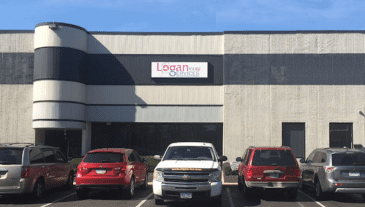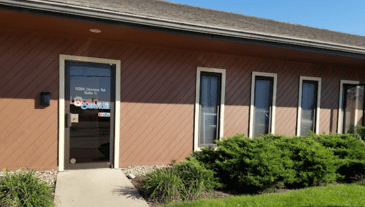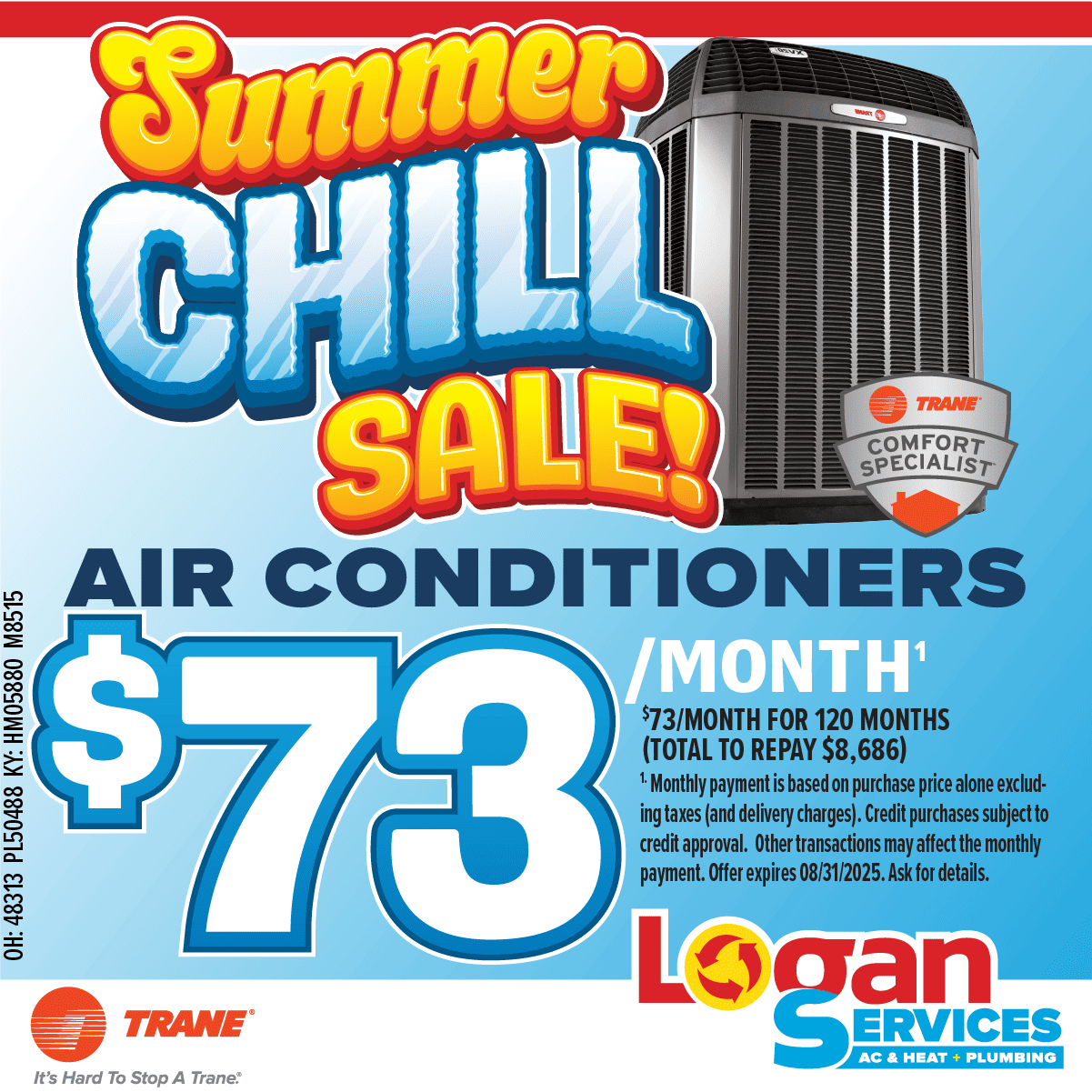As energy costs continue to rise, homeowners are looking for ways to save on heating and cooling expenses. For many, installing an efficient heat pump system is an attractive option.
Heat pumps provide both heating and air conditioning in one system while using less energy than traditional heating methods. However, cold weather can reduce heat pump efficiency, requiring the use of expensive backup electric resistance heaters. Learning how to optimize your heat pump thermostat to minimize reliance on this emergency heat is key to maximizing savings.

Below, we’ll cover everything you need to know about properly operating your heat pump and thermostat settings for efficiency. You’ll learn how emergency heat functions, when it is warranted and most importantly, how to reduce the runtime of these energy-intensive backup heaters. With some simple thermostat adjustments and vigilant system monitoring, you can optimize performance and cut down on the high energy bills that often accompany excessive emergency heat use. Keep reading for tips from HVAC experts on maximizing your heat pump’s capabilities and minimizing auxiliary heater usage this winter.
Heat Pumps and Emergency Heat
Heat pumps are becoming an increasingly popular home heating system, providing an energy-efficient alternative to traditional furnaces. Heat pumps utilize both a heat cycle and a cool cycle to provide climate control year-round. However, in extremely cold weather, heat pumps rely on emergency or auxiliary electric heat strips to maintain your home’s temperature. Knowing how to properly utilize your heat pump’s emergency heat function is key to maximizing efficiency and savings.
What is a Heat Pump?
A heat pump works differently than a gas or oil furnace, which burns fuel to create heat. Heat pumps transfer existing heat either into or out of your home, depending on whether you are heating or cooling. During winter months, the heat pump extracts outside heat from the air, ground, or water and transfers it indoors through a compressor and refrigerant cycle.
The same system runs in reverse during summer, pulling indoor heat and depositing it outdoors.
Heat pumps provide home heating and cooling in one system, making them a versatile and energy-saving option. Even in cold climates, heat pumps can extract enough heat to warm most homes down to moderate outdoor temperatures.
How Emergency Heat Works
While heat pumps are efficient down to around 35°F outside, colder temperatures reduce their capacity. Below this point, emergency or auxiliary electric resistance heat strips will kick in to maintain your indoor set temperature. These heat strips use traditional electric heating elements to produce heat, similar to a toaster or space heater.
Emergency heat provides a backup when it is too cold for the heat pump alone. But it is an expensive heating option, since electricity costs more than gas or oil heat. Minimizing reliance on emergency heat is crucial for efficiency.
IMPORTANT NOTE: Only enable the Emergency Heat Mode if your system struggles when temperatures fall below 20 degrees Fahrenheit.
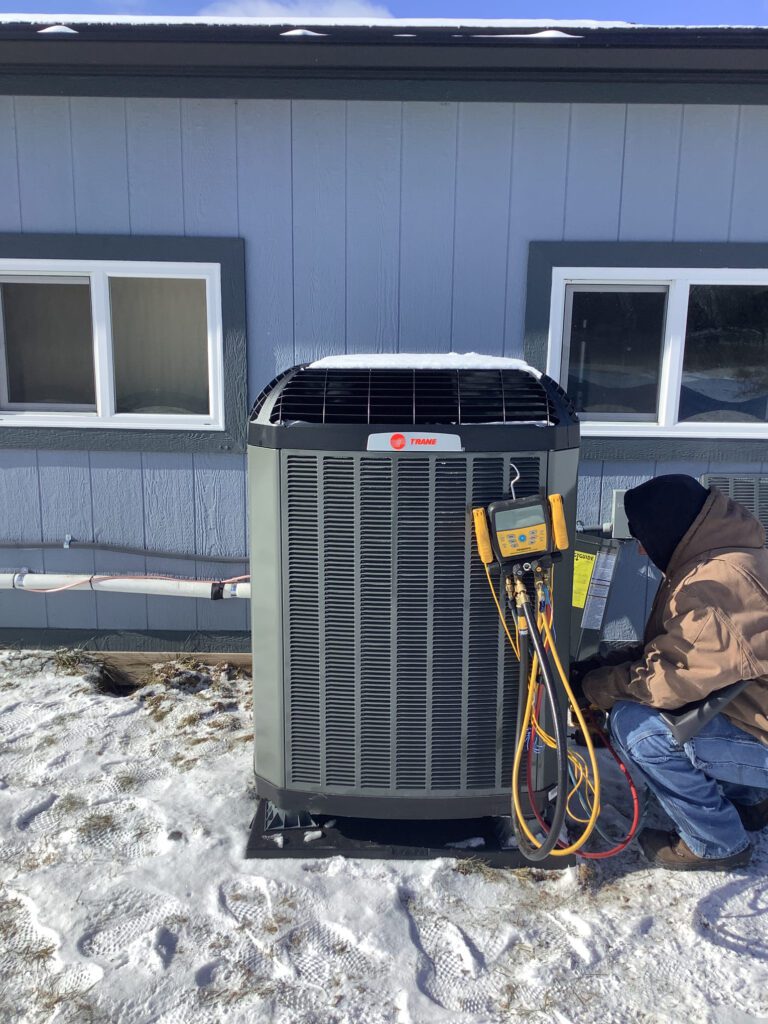
Optimizing Your Heat Pump Thermostat
Your thermostat settings significantly impact your energy costs when using a heat pump system. Follow these tips to optimize your heat pump’s performance and minimize emergency heat usage:
Program Schedules
Use your programmable thermostat to set lower temperatures at night and when away from home. Keep daytime home settings around 70°F or lower. The smaller the gap between indoor and outdoor temps, the more efficient the heat pump operates. Also, avoid frequent temperature adjustments, and maintain a consistent schedule for the best efficiency.
Minimum Runtimes
Set heat pump minimum runtimes to at least 15 minutes. This allows the system to operate efficiently rather than cycling on and off frequently. Keep emergency heat runtimes short, around 10 minutes maximum. Allow the system to fully reach set temperature before turning it off.
Temperature Setbacks
Use setbacks of around 5-6°F when lowering your temperature for off-peak times. Larger setbacks cause greater reliance on emergency heat to recover temperature quickly. Only lower temperatures as much as needed to save energy for vacant periods.
Fan Settings
Set your thermostat fan to the “Auto” mode rather than “On.” Keeping it on all the time will reduce efficiency. Turn on “Auto” fan circulate mode during extreme temperature and humidity periods.
Weather Stripping
Sealing leaks around doors and windows prevents drafts of cold air that force your system to work harder during colder weather. Inspect seals annually and replace worn weather stripping as needed to maintain a tight seal.
When to Use Emergency Heat
Ideally, your heat pump system should rarely need to engage the emergency heat option. But certain situations do call for its use. Follow these guidelines on when auxiliary heat is warranted:
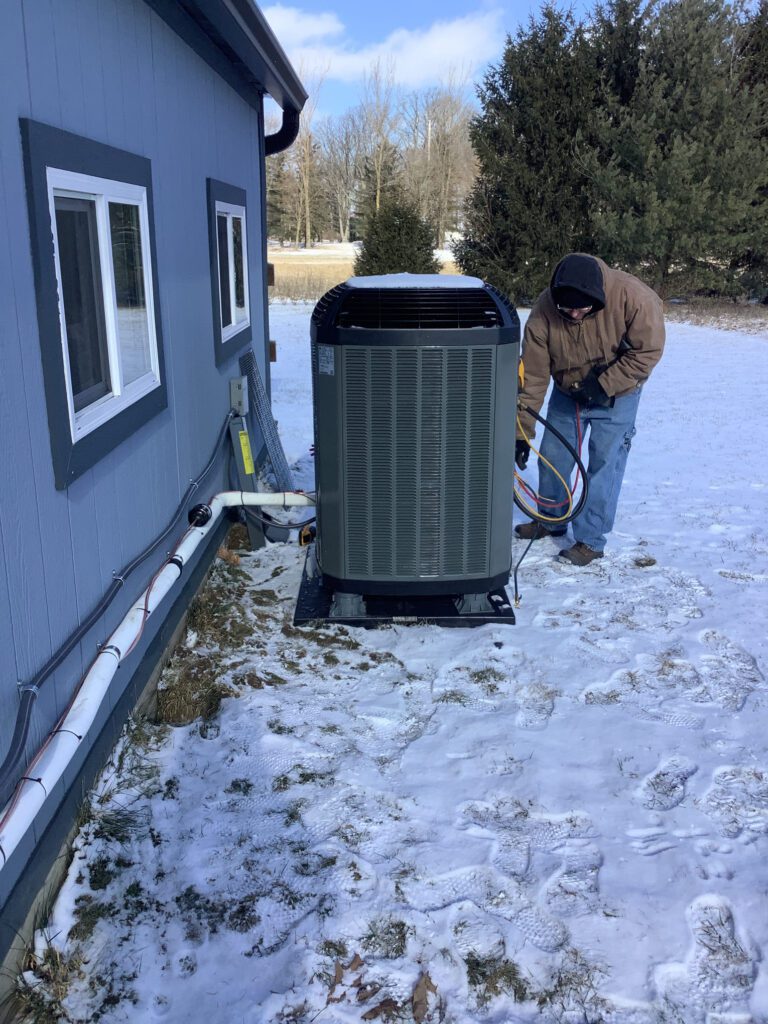
Extreme Cold Snaps
During short periods of extreme cold, emergency heat provides a boost to maintain comfort. Keep an eye on the forecast and use it judiciously in frigid temps below 30°F. Monitor outdoor temperature and only engage emergency heat when required for brief periods to offset bitter cold conditions. Turn it off promptly once the temperature rises.
Defrost Cycles
Heat pumps enter defrost cycles to melt ice buildup on outdoor coils. Emergency heat may run during these brief defrosts to offset the temporary loss of heat pump capacity. Expect defrost cycles to occur more frequently during periods of high humidity and freezing temperatures. The defrost process only takes 5-10 minutes in most cases.
Failed Heat Pump
If your heat pump stops working entirely due to failure or loss of power, engage emergency heat mode on the thermostat to provide heating until repairs can be made. Contact an HVAC technician promptly as running on emergency heat for prolonged periods will increase costs. Keep an eye out for signs of potential failure before it occurs.
Temporary Occupancy
If temperature setbacks aren’t possible when someone is home temporarily, a short burst of emergency heat can quickly warm things up. Only use emergency heat for temporary warming for a few hours at most to avoid high energy bills. Resume your normal programmed schedule as soon as possible.
Minimizing Emergency Heat Usage
While situations exist where auxiliary heating is warranted, relying on it too heavily results in energy waste and high bills. Here are tips to reduce emergency heat run times:
Regular Maintenance
Have your heat pump serviced before winter to ensure it operates efficiently when outdoor temperatures drop. Refrigerant levels, electric terminals, and air filters impact performance. Schedule annual pre-season tune-ups to keep the system in top shape. Technicians can diagnose and address any deficiencies. Be sure to check that refrigerant charge, coil condition, and electric connections are all optimal. Also request a full inspection of the outdoor unit to ensure no damage or debris buildup.
Programmable Thermostat
Invest in a smart or programmable thermostat optimized for heat pumps. They prevent wasteful overheating and excessive emergency heat runtimes. Select a model with advanced heat pump control algorithms and settings specifically designed to minimize auxiliary heat. Install and program it properly to take full advantage. Choose a thermostat that allows you to set optimal runtimes for both standard heat and emergency heat modes. Carefully follow all setup guidance for heat pump systems when installing.
Close Vents
Shut vents in unused rooms so your heat pump only conditions occupied areas of your home during cold snaps. Close vent dampers in one area at a time to determine which rooms aren’t being used. This prevents unnecessary heating of unused spaces. Pay attention to which rooms tend to be unoccupied regularly like guest rooms or storage areas. Also close vents in unfinished basements or attics if applicable.
Check Air Flow
Ensure air flows properly across indoor and outdoor heat pump coils. Blocked airflow forces the system to work harder. Inspect and change filters monthly during peak heating and cooling seasons to maximize airflow. Check for bent or crimped ductwork restricting flow to registers. Confirm the outdoor unit has adequate clearance and that debris has not collected on the coils.
Insulate Ductwork
Sealing and insulating ducts prevent heated air from leaking before it reaches living spaces. Repair any disconnected or damaged ducts that allow conditioned air to escape before reaching vents. Use mastic sealant or metal tape on all duct joints and connections to minimize leaks. Ensure insulation wrap on ducts is intact and has not become compressed or damaged.
Upgrade Windows
Improve insulation and seal older windows to minimize cold drafts that boost emergency heat usage. Replace any window seals or weatherstripping that become cracked or porous over time to maintain a tight barrier. Inspect windows annually before winter, looking for gaps in caulk and deteriorating seals. Plastic film window insulation kits can provide an added layer of protection from drafts.
Signs Your Emergency Heat is Overused
Relying too much on auxiliary electric heat rather than your energy-efficient heat pump will quickly show up on your energy bills. Watch for these signs of overuse:
- High heating bills, even during moderate weather
- Emergency heat running even when above 30°F outside
- The top section of the heat pump is very hot, while lower half is cool
- The thermostat was set to emergency heat mode despite no failures
- The main heat pump rarely ever runs
- Burning smell from excess dust on emergency heat coils
Address the underlying issues forcing unnecessary reliance on backup heating. An HVAC professional can assess system failures or deficiencies leading to overuse.
Understanding how to operate and maintain your heat pump system properly is essential to maximizing savings and efficiency, especially regarding auxiliary electric heat. Follow the usage, settings, and troubleshooting tips outlined to reduce reliance on expensive emergency heating. A few adjustments and improved programming can significantly curb energy waste and winter heating costs. With some optimization attention, your heat pump can provide reliable, cost-effective, year-round comfort.
Frequently Asked Questions
What temperature should I set the thermostat to?
For heat pump efficiency, aim for 68-70°F during occupancy. Lower it 5-6°F when away or overnight. The smaller the gap from outside temperature, the more efficient the system operates.
How can I tell if my emergency heat is running?
Check your thermostat or system controls for an indicator light noting auxiliary or emergency heat mode. You may also hear the electric coils activating or feel significantly more heat from the top section of vents.
Why does my house feel colder with a heat pump?
Unlike furnaces that deliver a blast of hot air, heat pumps provide a more gradual warmth. Make sure you allow the system adequate runtime to reach your desired indoor temperature.
